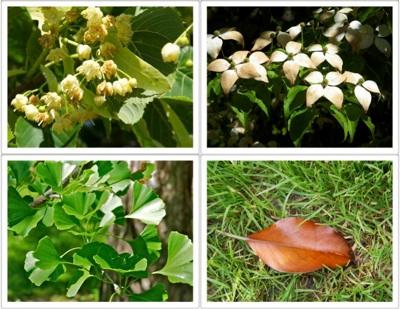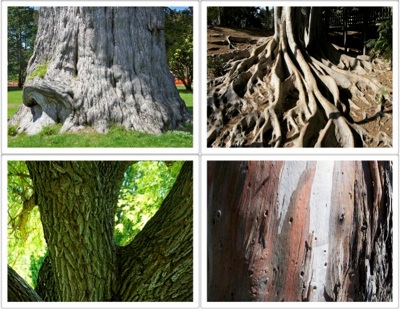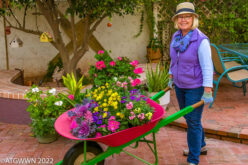The best time to plant a tree is 20 years ago, the second best time is now. – Chinese Proverb
Arbor Day in the U.S is celebrated on the last Friday in April. In Arizona, we have many good times to plant trees scattered throughout the year so this date is a bit arbitrary in our region. Still it is a significant day to contemplate trees. The Arbor Day Foundation’s mission is to encourage us to Plant, Nurture and Celebrate Trees.
I am a big fan of trees; their shape, leaves, bark, habits all seem quite amazing. Not everyone is quite as interested. I discovered this one day walking down stairs of a three-story parking garage where I was able to look down on and into a thriving multi-trunk Eucalyptus. I said to my companion, “Wow, isn’t that a fabulous tree,” and her reply was “I’ve never considered a tree fabulous.” At that moment, I felt sad for her and she thought I was strange.

“Planting a tree today is a sign of enthusiasm for the future,” writes Lewis Blackwell, in his remarkable book “The Life & Love of Trees.” The life span of a tree varies greatly due to location, species and growing conditions. There are bristle cone pines in California over 4000 years old. There are no trees that age in my neighborhood and probably not in yours either. Urban communities created by developers are filled with replanted rather than remanent trees (surviving despite urban growth.) Building new communities generally means scraping away all existing vegetation, building the infrastructure, the houses and then replanting. Thirty years ago it may have been two mulberry trees per house, then Aleppo pine trees were popular, then Ficus and so on. Trees go in and out of fashion and these styles shape our view of a tree. As gardeners, we may have a broader view of our choices of trees to plant but many tree planters get lost in the leaves.

Nurturing trees is especially important in our home gardens. We hope to gain shade, perhaps fruit, a show of flowers or color, and general beauty in our space. Trees can give our gardens so much but can also make trouble with invasive roots, droppings, and bad manners when they creep over the fence and shade our neighbor’s prized rose garden. We need to feed, water and train our trees to grow to their best potential in the space we have.
Trees need our nurturing beyond home gardens as they truly stand quietly & constant in our world. Only humans can advocate for trees as Lewis Blackwell also writes, “trees are not going to argue or celebrate their own story, . . . . . one decent size tree can generate the oxygen to support a family of four. Without them, there is no us.”
Celebrating trees takes all shapes and forms. I cheer on a hot July day when I find a parking spot shaded by a tree. A golfer cheers when he drives his ball toward the green and misses the obstructive tree on the course. Visiting an arboretum inspires a true celebration of trees.
Moscow, Idaho is the home of the Charles Huston Shattuck Arboretum, named for the founding forestry professor at the University of Idaho. In 1910, Shattuck began planting trees to create an outdoor classroom for his students. Today 63 acres of trees have been planted, grouped by variety and region: Asia, Europe, Eastern & Western North America. Set away from the main campus with a carpet of grass, and walking paths, a visit here is a rich sensory experience. The silence is punctuated with bird songs, rustling leaves and little else. Given ample space, the trees grow high and wide. Varieties such as Centennial Oaks, Asian Willows, Ginkgos and Weeping Canadian Hemlock sweep the sky, creep over the ground and weep allowing a visitor to fully experience a tree’s potential. Excellent labeling introduces you to each unique species. Experiencing such a wide variety of trees is truly awe-inspiring.

Arboretums are an essential element of our connection to trees. As we live in tighter spaces and are exposed to fewer and fewer varieties of trees we could forget to celebrate trees. Celebrating trees doesn’t require a shovel but it does require us to notice. Visit any of our local Arboretums, at ASU, Boyce Thompson, Flagstaff, South Mountain and look closely at the leaves, branches and bark. Walk among the trees, smell the air, the blooms, run your hands through the leaves, and feel the texture of the bark. Take a blanket and lay on the ground, look up into a tree, which likely was planted by someone else for you to enjoy, and recharge your enthusiasm for the future.
originally published in Roots & Shoots April Newsletter,
@http://cals.arizona.edu/maricopa/garden/mgcentral/uploads/Apr11.pdf

